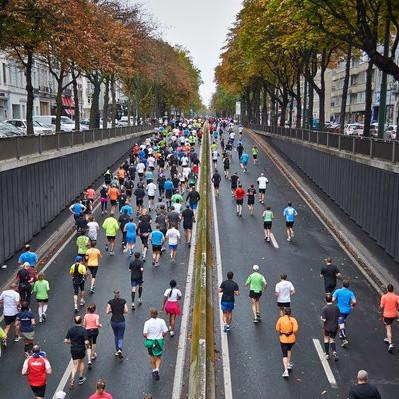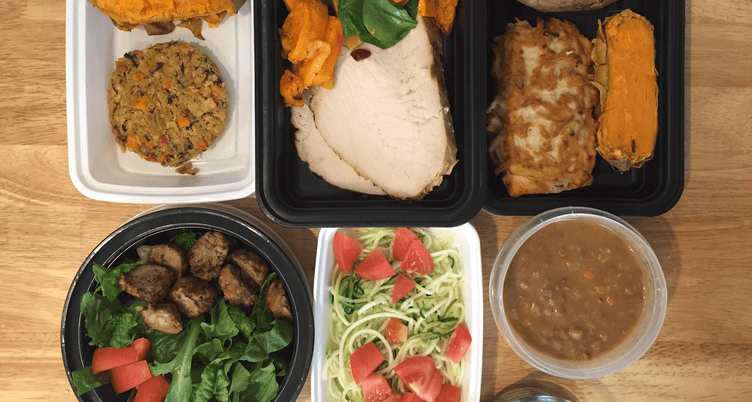Running doesn't come naturally to every body, and issues such as bad posture can put you at risk for injury when running. Fortunately, there's a way to analyze the way we walk or run in order to pinpoint any biomechanical abnormalities: gait analysis. This simple process is typically performed by a fitness professional and helps determine what your body needs to be successful with running.
Whether you're an experienced runner or just starting out, here are five reasons you should get a gait analysis right away.
1. Correct Form Issues
During your gait analysis, you'll walk or run on a treadmill for a certain period of time. The person facilitating will analyze your movements, footfall, and more with a computer and/or eyesight. This allows them to pinpoint any biomechanical abnormalities that could lead to injuries. Common abnormalities include:
- Overpronation
- Oversupination
- Hip hiking
- Pelvic tilt
- Increased Q angle
These are commonly caused by muscular imbalances and structural problems, both of which can be improved by working with a fitness professional.
2. Visualize the Bigger Picture
During a full gait analysis, the way your body moves is analyzed, not just your running form. A professional can map out your body mechanics while running to show:
- Level of flexibility
- Ingrained running habits (for example, balling your hands into a fist)
- Strengths
- Weaknesses
- Kinesthetic awareness
Once you know how your body works, you can begin modifying or correcting the issues. In some cases, cross-training or yoga is all you need to manage issues such as tight hamstrings or weak glutes, both of which are common problems for both new and long-time runners.
3. Recognize Muscle Compensation Patterns
Muscles and joints don't always work the way they're supposed to when running. To make up for this, the body resorts to compensation patterns. When these temporary patterns form, small muscles take over to do the work that should be done by larger muscle groups, such as the hamstrings or glutes.
This creates imbalances that can lead to hip and knee pain. During a gait analysis, you'll discover which muscle groups your body is actually using and apply that information to readjust or rehabilitate, allowing your body to move properly.
4. Find the Perfect Running Shoe
Just as a carpenter needs the right tools to perform his job duties, a runner needs the right shoes. The running shoe serves as a structural and functional extension of the foot. Chosen correctly, it can improve your running. Chosen improperly, it can amplify biomechanical and functional flaws, thereby increasing your risk of injury, according to gait analysis experts at Fit2Run.
During a gait analysis, you'll discover which running shoes can maximize your running skills. Running shoes that either under or over support your lower leg muscles or have too high or too low of an arch can lead to the formation of compensation patterns that were referenced above.
Like many other sports, the right running shoe will significantly impact your performance and help you run stronger, faster, and injury-free.
5. Maximize Efficiency
Simple tweaks to your posture, arm movements, and more can make you a better, more efficient runner. This is especially important for competitive runners who are trying to win a race or set a new PR. With tips and tools from a professional, you'll be able to correct your movement patterns and maximize your efficiency while running.
A gait analysis is a great way to improve as a runner, whether you're new to the sport or have been running for years. In specialized shoe stores, this is a free service if you buy a pair of shoes. You can often sign up for gait analysis at sports clinics and physical therapy centers as well, both of which may charge or bill through your insurance.
Like, comment, or share this post on Facebook or Twitter to help others who might benefit from a gait analysis.
BIO: Jessica Thiefels has been writing for more than ten years and is currently a full-time blogger. She is also an ACE Certified Personal Trainer, NASM Certified Fitness Nutrition specialist, and the owner of her own personal training business, Honest Body Fitness. Follow her Instagram for challenging new exercises, workout ideas and more. And don't miss out on our amazing BlenderBottle brand products!





Leave a comment
All comments are moderated before being published.
This site is protected by reCAPTCHA and the Google Privacy Policy and Terms of Service apply.